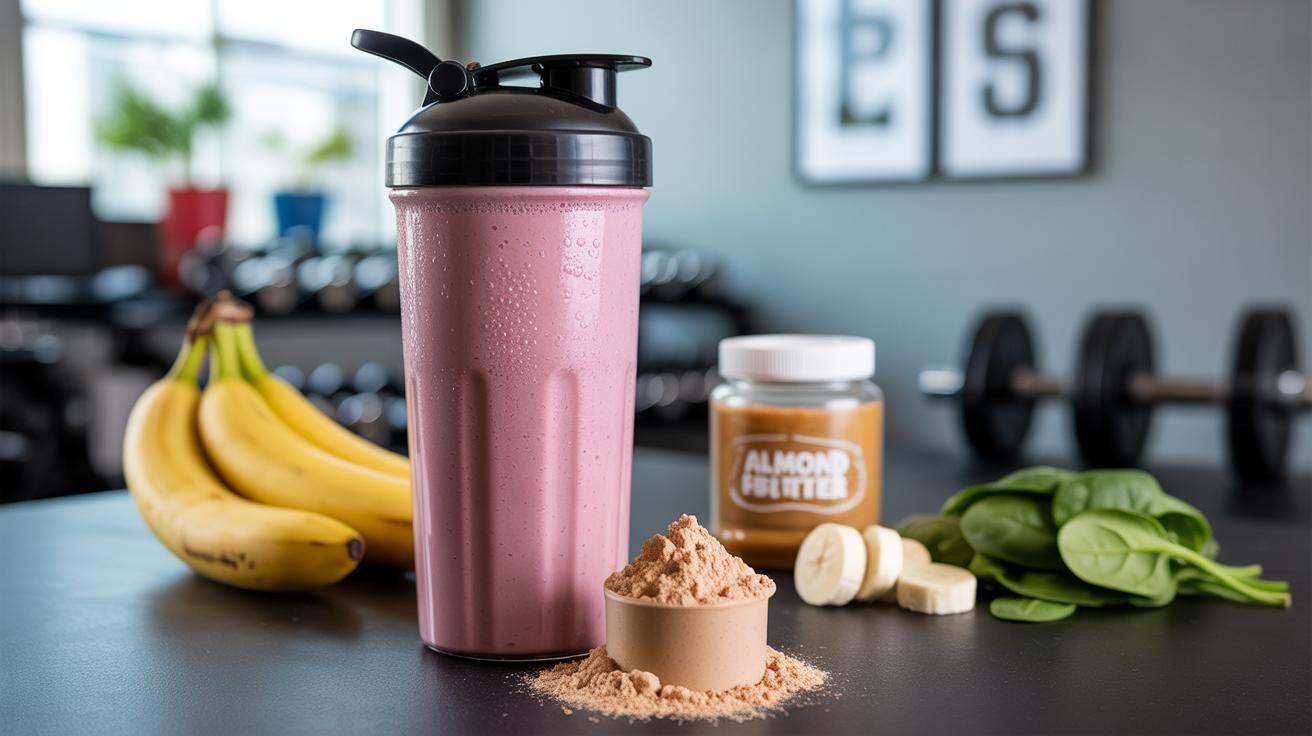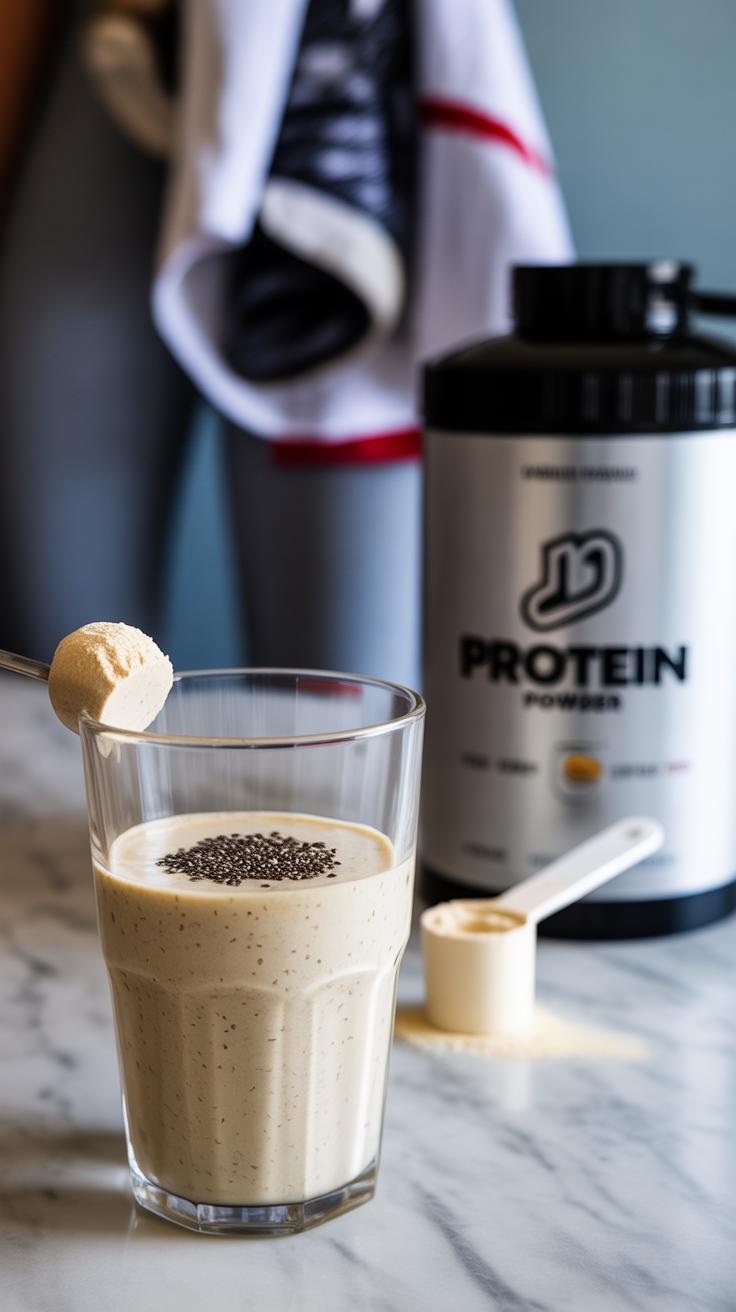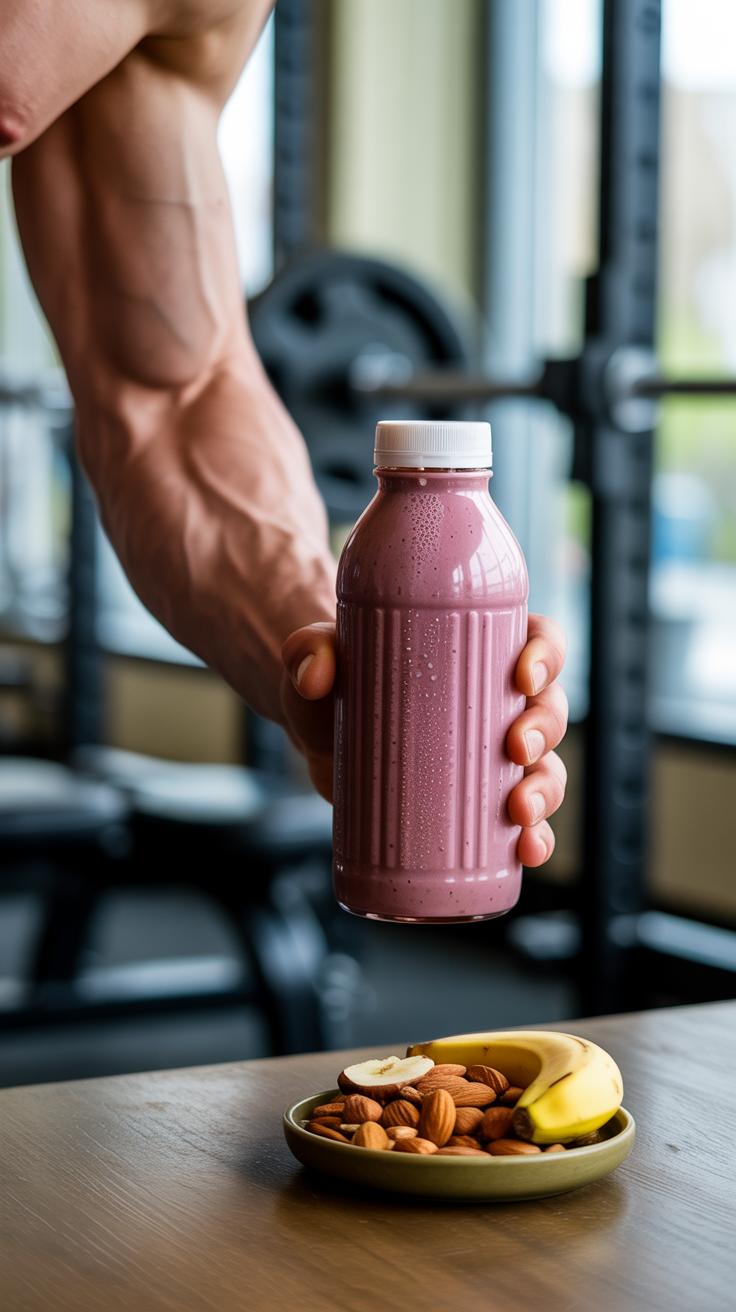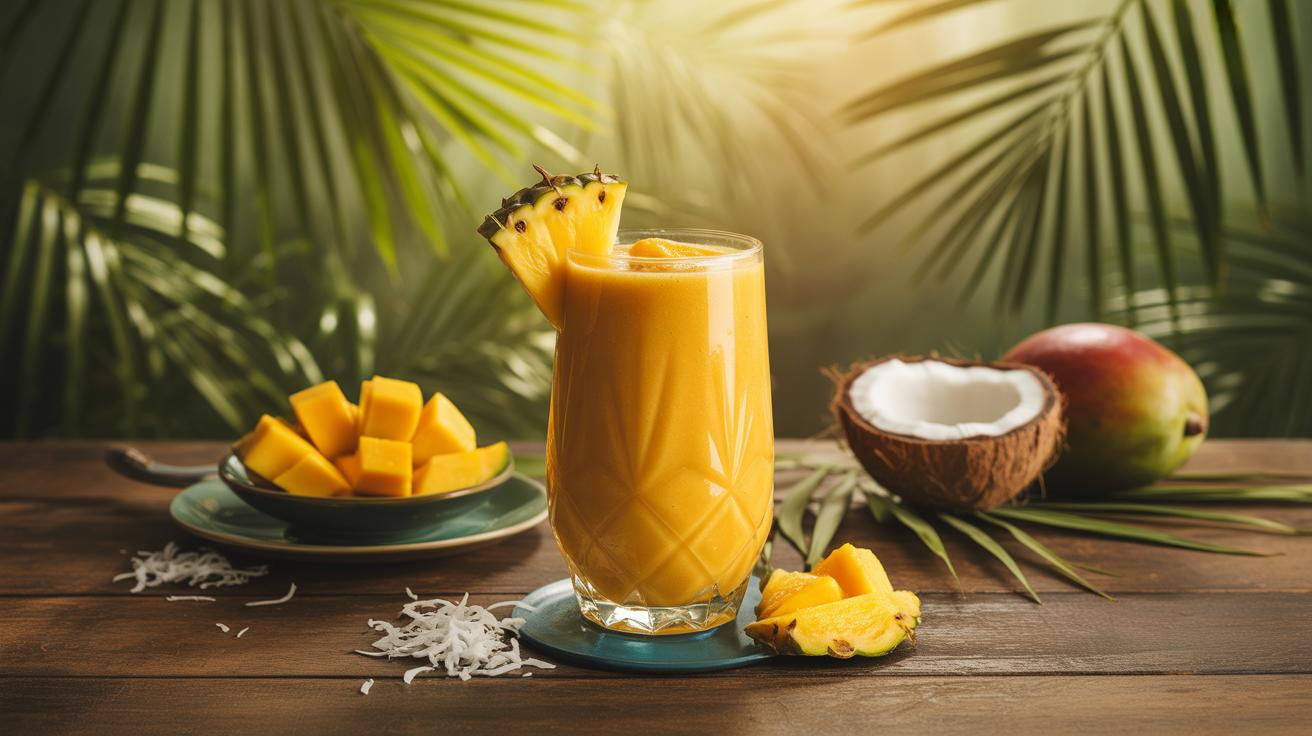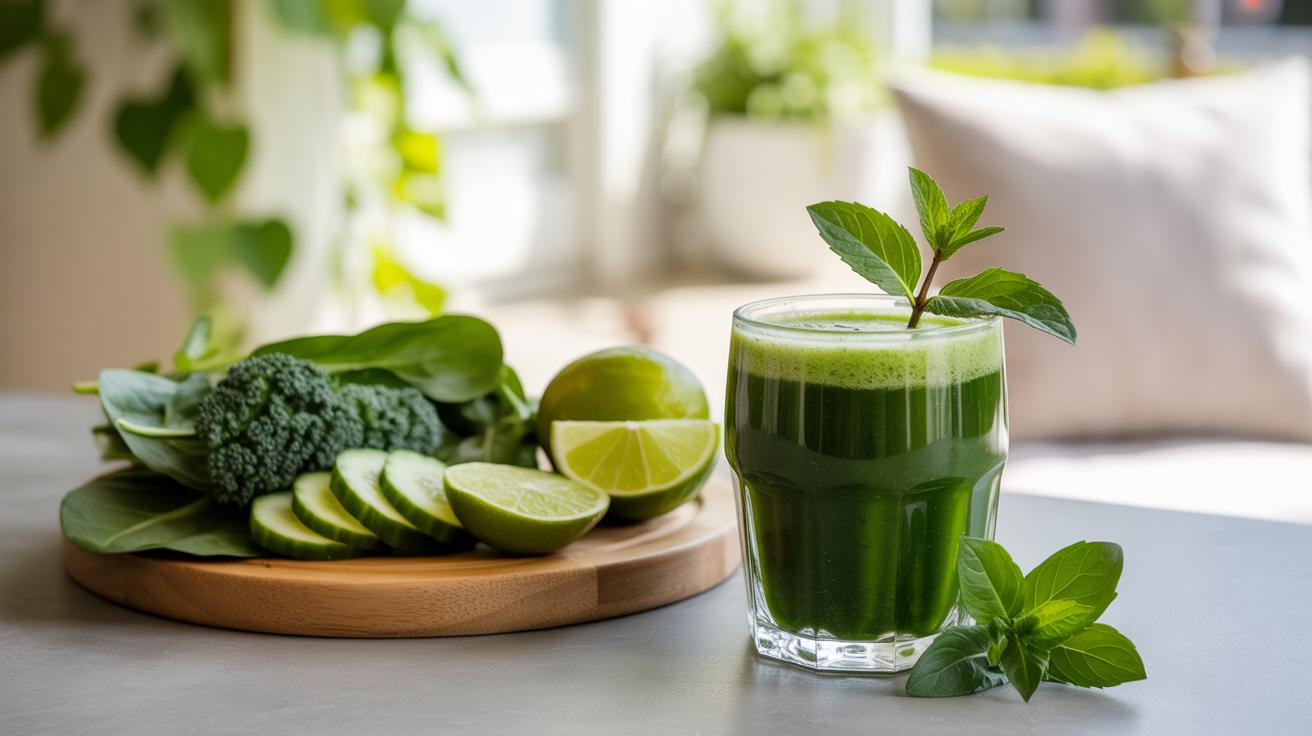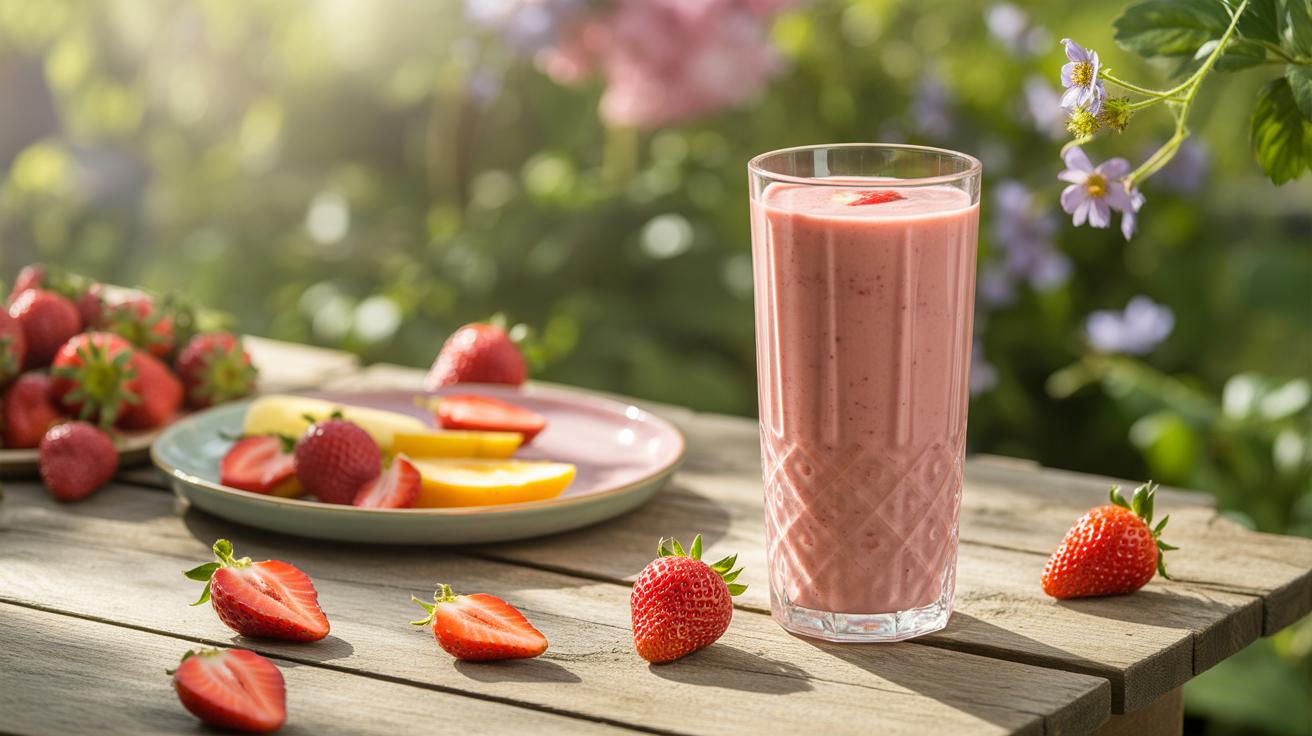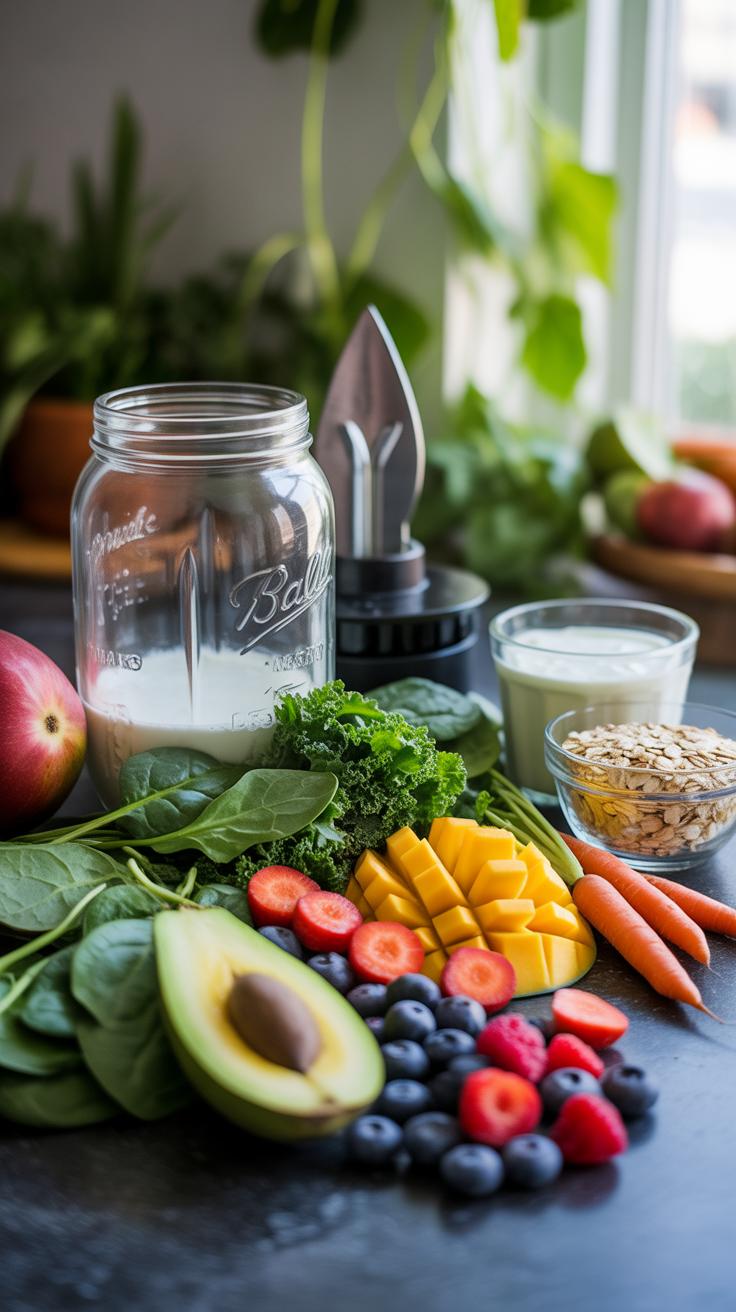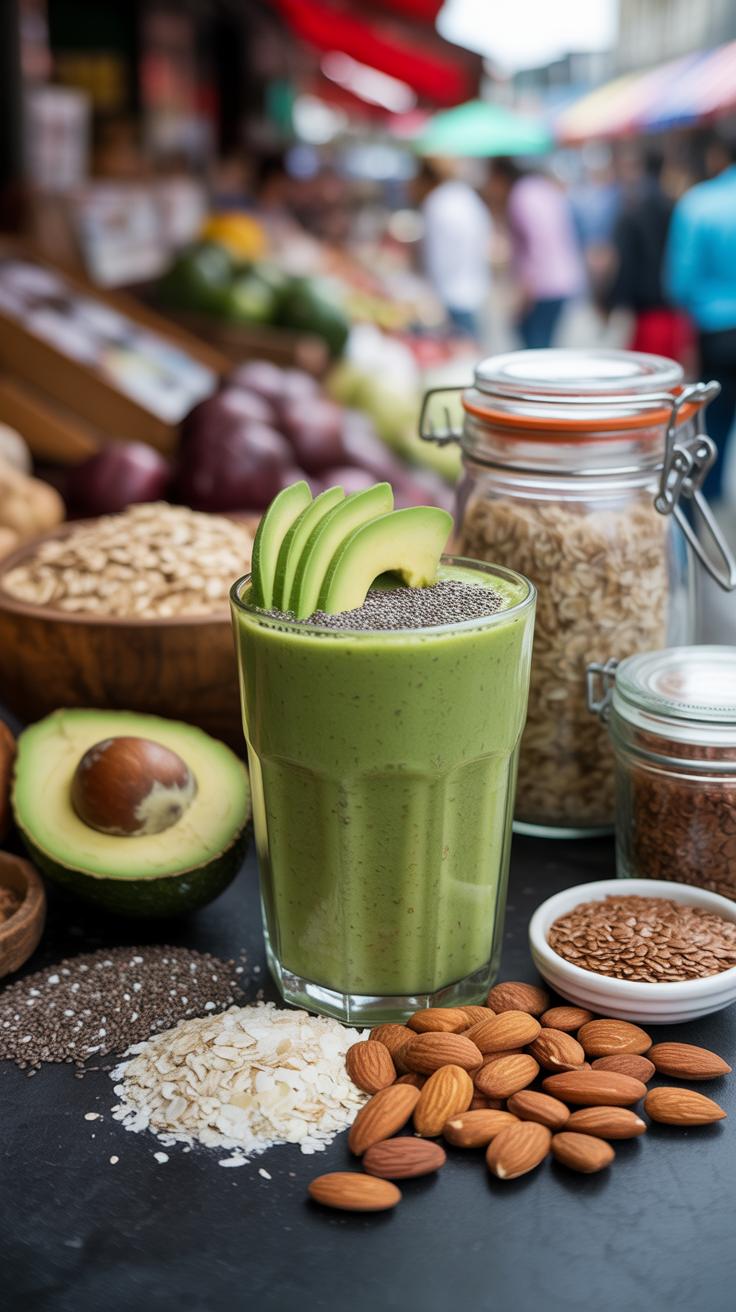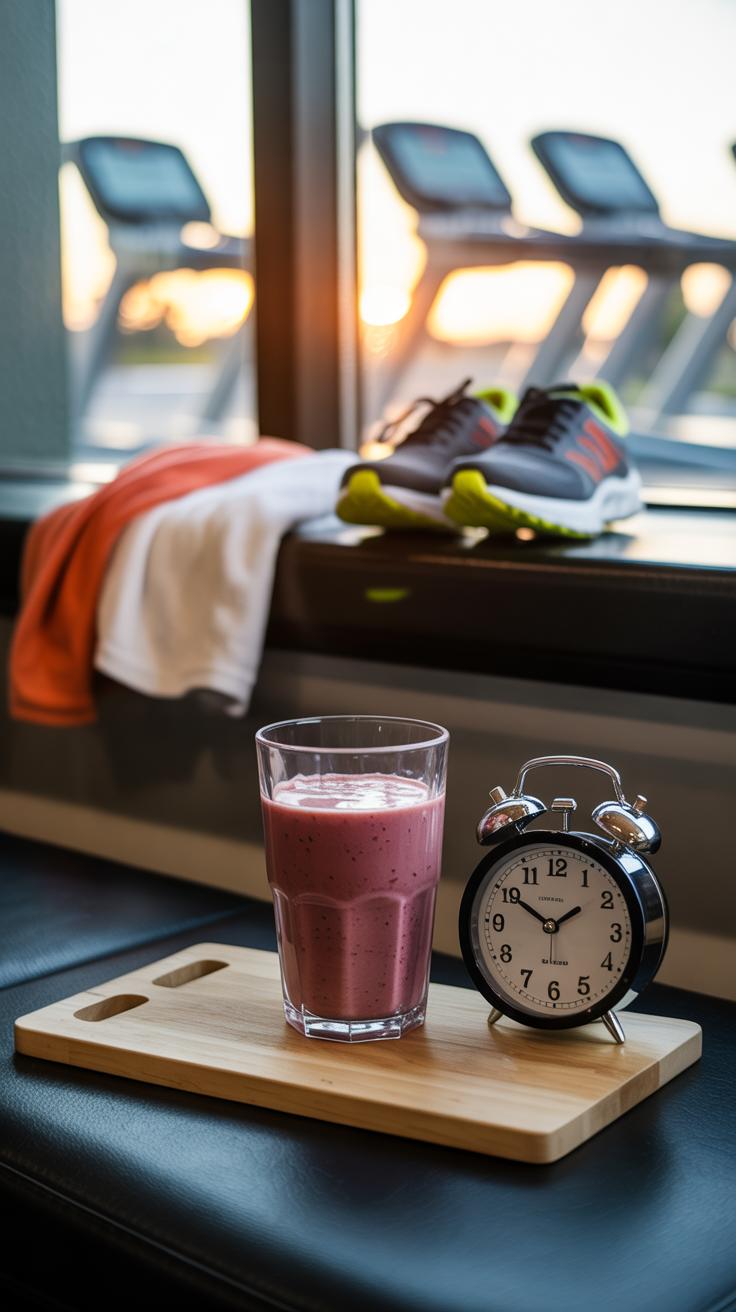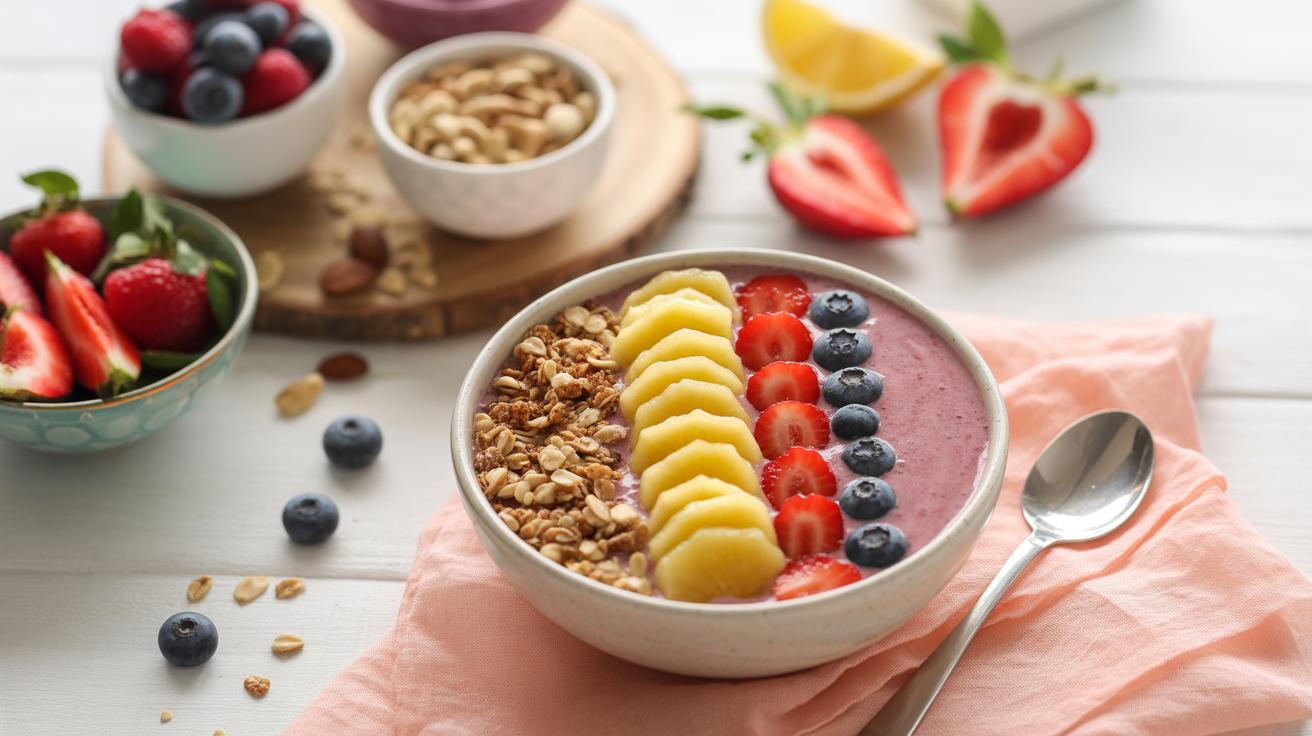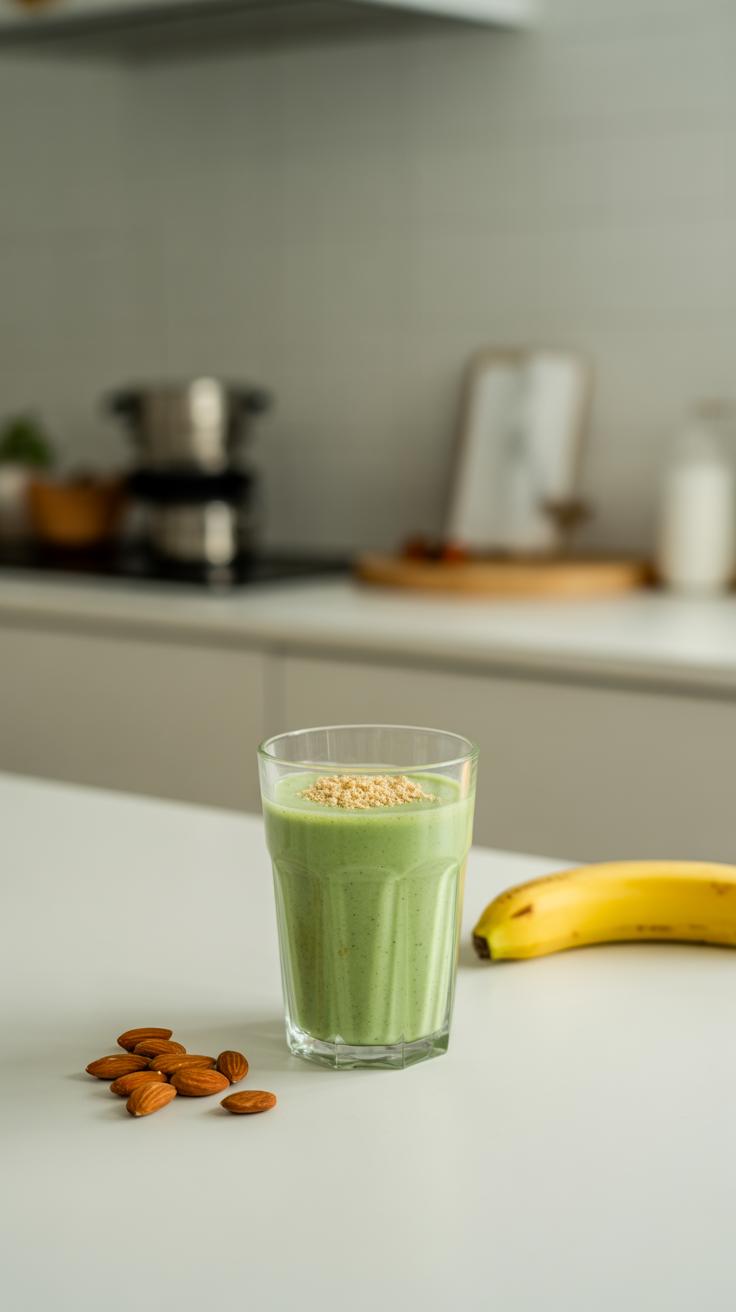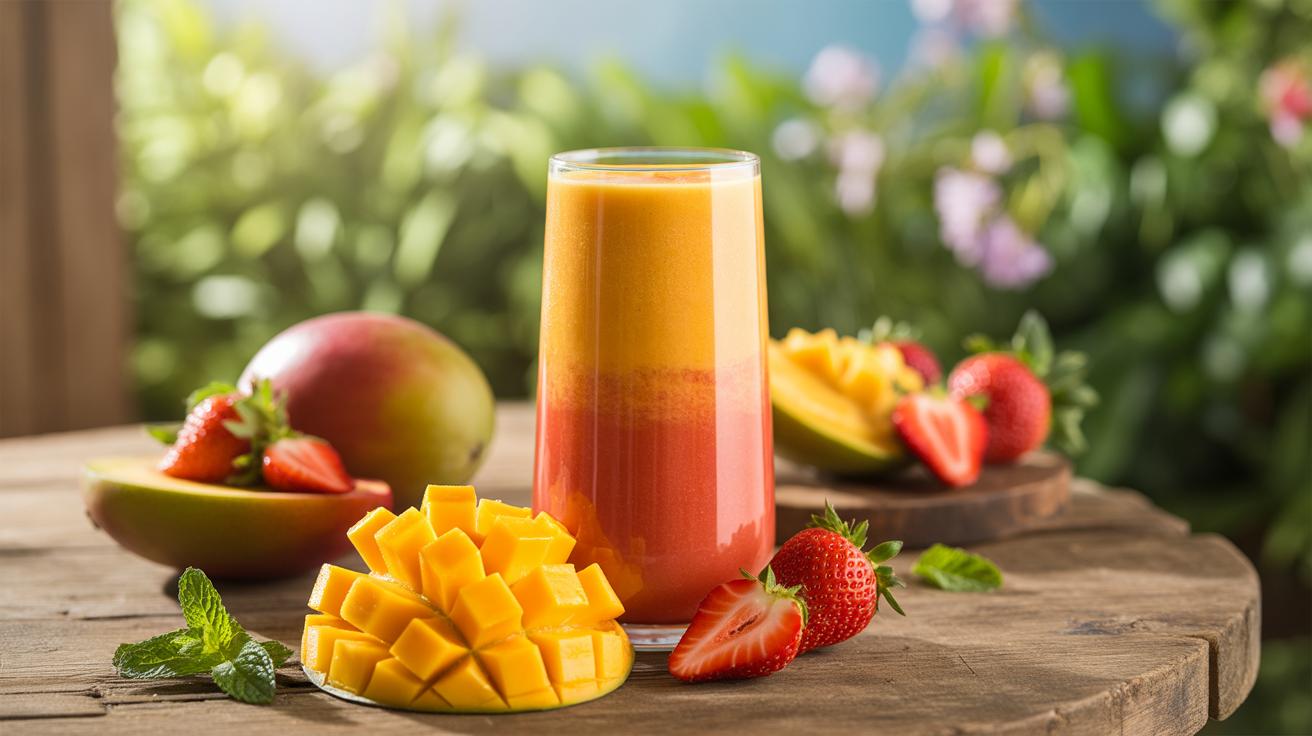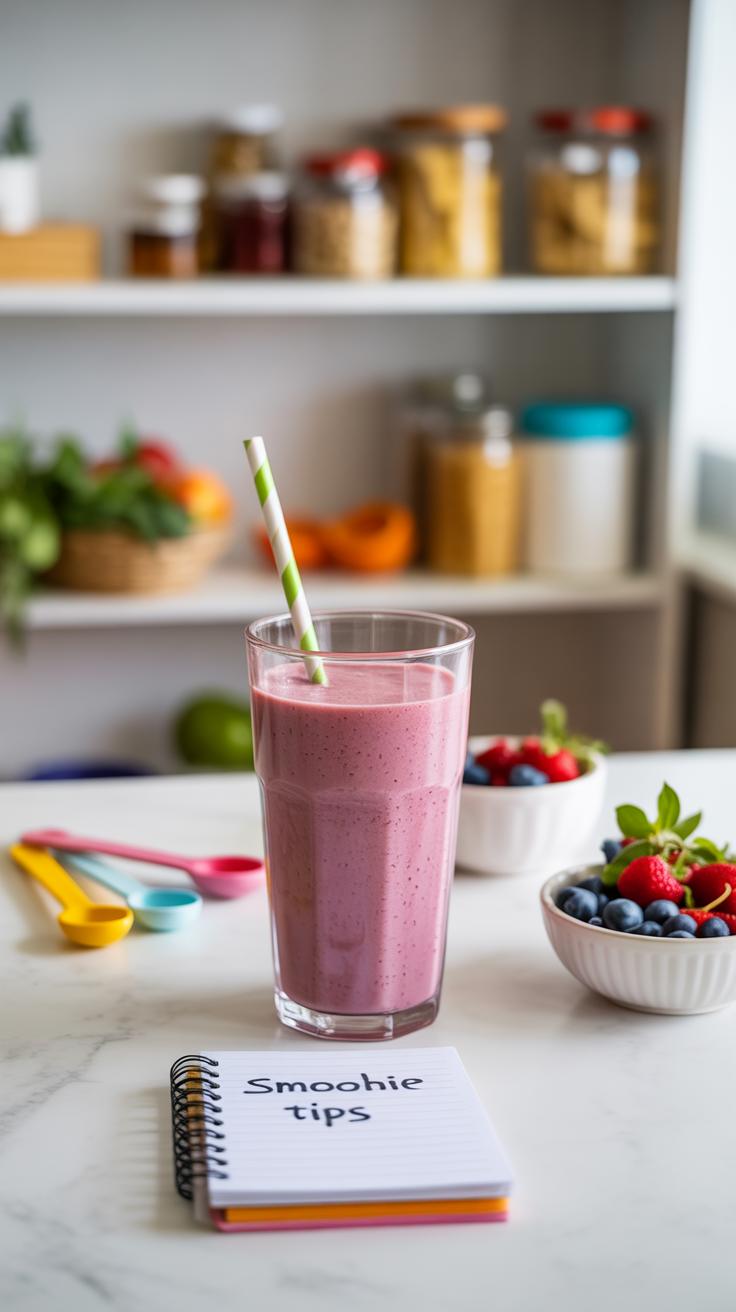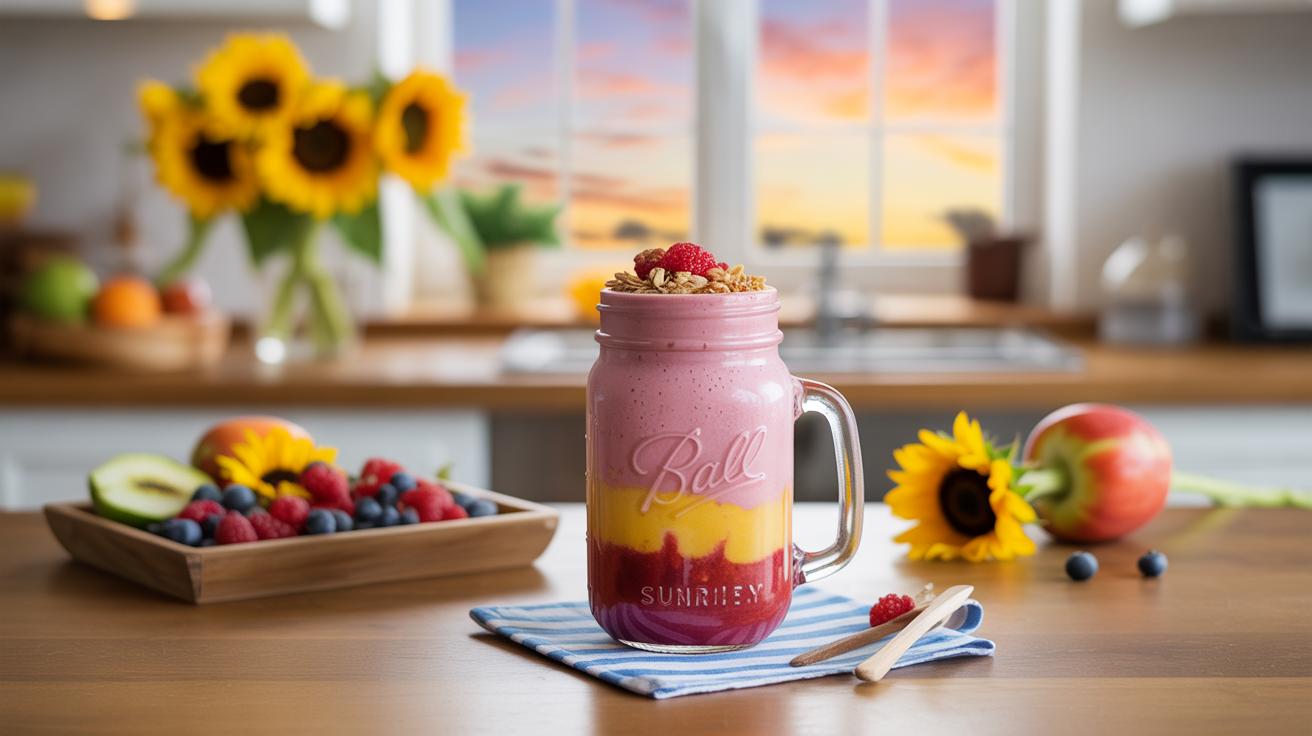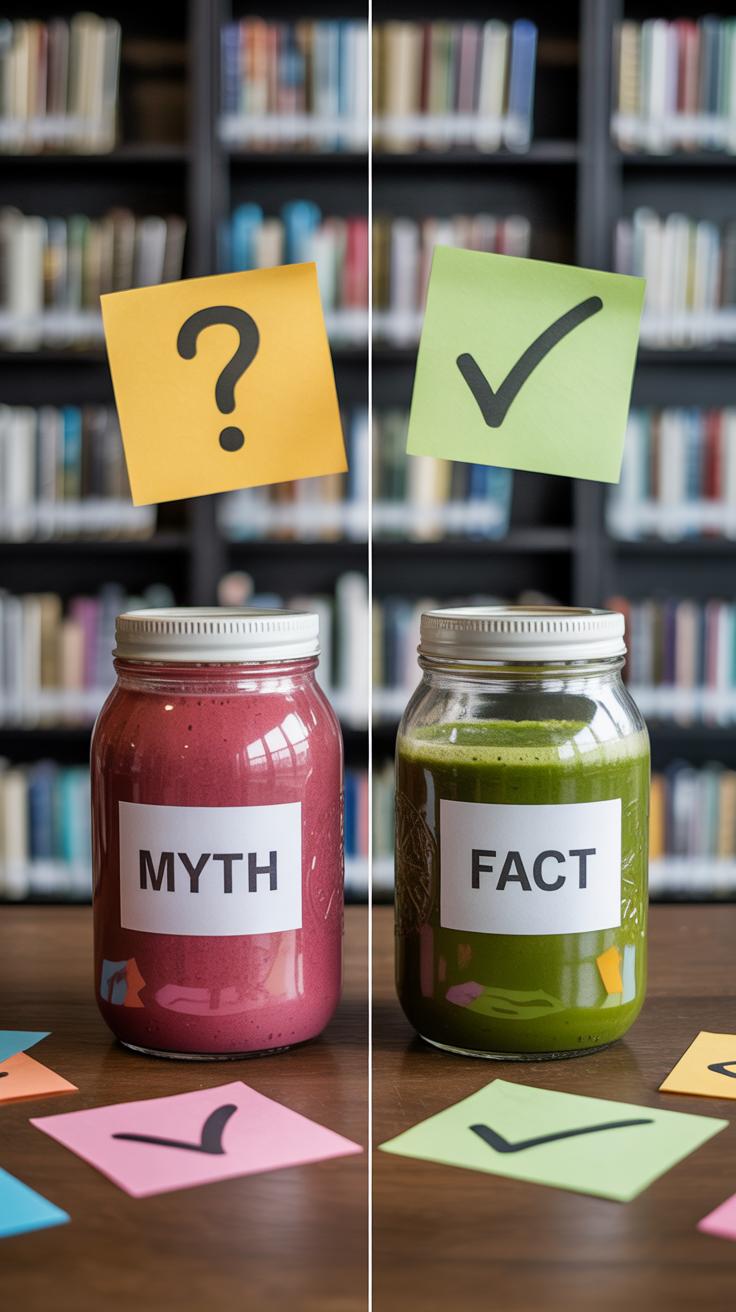Introduction
High protein smoothies offer a tasty and quick way to support muscle recovery after exercise. After working out, your muscles need protein to repair tiny damages and grow stronger. A smoothie packed with the right nutrients can help your body bounce back faster and improve your fitness over time.
In this article, you will learn what a protein smoothie is, why it is important for muscle recovery, and how to make your own. We will explore the best ingredients for muscle repair and tips to get the most from every sip. Whether you are an athlete or just want to stay healthy, protein smoothies can be a helpful tool for your daily nutrition.
Understanding Protein Smoothies
What is a Protein Smoothie
A protein smoothie is more than just a blended drink. It’s a beverage focused on delivering a significant amount of protein along with other nutrients. Typically, it involves a liquid base—often water, milk, or plant-based milk alternatives like almond or oat milk. These liquids help achieve the right texture and make the smoothie easy to digest.
Common ingredients vary but often include fruits such as bananas, berries, or mango to add natural sweetness and vitamins. Vegetables like spinach or kale sometimes show up too, especially if you want a nutrient boost without altering flavor drastically. Nuts, seeds, or nut butters occasionally make the cut for texture and healthy fats.
What sets protein smoothies apart from regular smoothies is their emphasis on protein content. Regular smoothies might prioritize fruits and vegetables, while protein smoothies prioritize muscle-nurturing protein, usually through powders or other high-protein ingredients.
Why Add Protein to Smoothies
Protein powder is the cornerstone of many protein smoothies. It comes from various sources—whey, casein, soy, pea, or rice protein—to name a few. Adding protein this way offers a quick, measurable dose of amino acids essential for muscle repair and growth.
When you work out, your muscles undergo tiny tears. Protein helps rebuild those fibers stronger than before. That’s why many people find smoothing down a protein-rich shake after exercise really helpful. It’s a convenient way to give your body the building blocks it needs without forcing yourself to eat a large, heavy meal right away.
Your body can only synthesize muscle so fast, so spreading protein intake through foods like smoothies may help maintain a steady supply during recovery. Besides muscle repair, protein can keep you feeling fuller longer, which might be useful if your eating schedule is tight or irregular.
How Muscles Recover After Exercise
After you finish a workout, your muscles don’t just bounce back immediately. They go through a complex and sometimes slow process to repair and adapt. This recovery phase is essential because it lets your muscles heal from the stress you put on them. Without rest and proper nutrition, your muscles might stay weak or even become more prone to injury.
When you exercise, especially strength training or intense activity, your muscle fibers suffer tiny tears called microtrauma. These little damages aren’t usually visible, but they cause that familiar soreness the day or two after working out. You might wonder why a bit of pain is part of getting stronger, but it’s because the body reacts by trying to fix these tears and reinforce the muscles.
Muscle Damage from Workouts
Those microtears happen because your muscles contract forcefully, more than usual, or in new ways. It’s like pushing your muscles out of their comfort zone. This stress leads to inflammation and soreness, which can feel uncomfortable—sometimes downright annoying. That soreness is often called delayed onset muscle soreness (DOMS), and while it can make you think twice about your next workout, it signals the start of the recovery process.
Interestingly, not all muscle soreness means damage. Sometimes, you just feel stiff from unfamiliar movements. But real microtrauma triggers cells to rush to the site to clean up and rebuild the muscle tissue stronger than before. So, in a way, the soreness is your body’s awkward attempt at fixing itself.
Role of Protein in Muscle Repair
Protein plays a key role here. When your muscles break down, they need building blocks to repair and grow. Protein provides these blocks—amino acids—that your body uses to rebuild the damaged fibers. Without enough protein, this repair process slows down or becomes less effective.
It’s not just about eating protein but timing and quality. After exercise, your muscles are like a sponge, ready to soak up nutrients and start fixing themselves. That’s when a protein smoothie can be helpful—fast, easy, and supplying the muscle with what it needs without delay. Protein helps turn that soreness into strength, enabling you to get back to training sooner and maybe notice progress a bit faster.
Choosing the Right Protein Powder
Picking a protein powder for your smoothie isn’t always straightforward. There are so many types, each with its quirks, which can make the choice feel overwhelming. Whey protein is the most popular. It’s fast-absorbing and rich in essential amino acids, making it great for muscle recovery. But some people find it a bit heavy or hard to digest, especially if they’re lactose intolerant.
Then there’s the plant-based crowd: soy, pea, rice, and blends. Soy offers a complete protein profile, but some worry about its hormonal effects — though the science is still kind of all over the place. Pea protein is easier on the stomach and often has a grassy taste that might throw you off if you’re sensitive to flavors. Rice protein tends to be grainy and less balanced in amino acids but can work well mixed with pea.
If I had to give you some quick tips on choosing:
- Consider allergies or intolerances first—dairy, soy, gluten.
- Think about your taste preferences; some powders are chalky or earthy.
- Look at the ingredient list—less filler, more protein.
- Check for added sugars or artificial ingredients if you want a clean option.
- Don’t shy away from trying samples; the texture and flavor might surprise you.
Ultimately, the best protein powder is the one you’ll actually use regularly. So maybe taste matters as much as nutrition. What’s the point if you cringe every time you drink it?
Best Fruits and Vegetables for Smoothies
Fruits That Add Nutrients and Flavor
When you think of protein smoothies, fruits are often the easiest way to improve taste and boost nutrition. Berries like blueberries, strawberries, and raspberries stand out. They bring a natural tanginess, but also plenty of antioxidants, which play a role in reducing muscle inflammation after a tough workout. I find that raspberries add a nice texture too, something a bit more than just sweetness.
Bananas are a classic for a reason. Their creamy texture makes smoothies smooth, and they pack potassium, which helps with muscle cramping. Plus, their natural sugars give you quick energy without needing extra additives. Mangoes, though maybe less common, are great for a richer sweetness and vitamin C, which supports tissue repair. You might think adding mango makes the smoothie overly sweet, but balancing it with tart berries can do the trick—taste-testing is key.
Vegetables That Boost Recovery
Leafy greens, especially spinach and kale, are staples for recovery smoothies. These greens don’t just provide fiber—they load your drink with magnesium, which helps muscle relaxation and overall recovery. They’re easy to mask with fruit flavors, so you don’t end up with a bitter drink. Still, sometimes the earthiness can sneak through, so blending well is important.
Other vegetables like beets also deserve a spot. Beets contain nitrates that might improve blood flow, which can aid muscle repair, although the research is still a bit mixed. Carrots or cucumber add hydration and mild sweetness, plus antioxidants without overpowering the flavor. I guess sometimes adding veggies to a smoothie requires a bit of experimenting so you find the right mix for your taste buds and recovery needs.
Adding Healthy Fats and Carbs
When you think about muscle recovery, protein often steals the spotlight. But mixing in healthy fats and carbohydrates in your smoothie can make a big difference too. These macronutrients don’t just fill you up; they actually help your muscles repair and get stronger.
Sources of Healthy Fats
Try adding fats from nuts like almonds or walnuts, seeds such as chia or flax, and oils like avocado or coconut oil. These fats play a role beyond just calories—they support cell membranes and help reduce inflammation from tough workouts. I’ve found that a spoonful of nut butter in my smoothie not only improves texture but keeps me feeling full longer. Plus, these fats provide sustained energy, which your muscles need while recovering. You might wonder if fats slow digestion or interfere with protein absorption, but moderate amounts generally balance well in a post-workout smoothie.
Carbohydrates to Replenish Energy
Carbs restore glycogen—the stored energy in your muscles depleted during exercise. Including oats, honey, or even ripe bananas in your smoothie helps bring that energy back. Oats give a slow, steady release of carbs, which feels less like a sugar crash and more like actual energy you can count on. Honey offers a quick spike, useful if you’re training hard again shortly. It’s interesting how these carbs not only fuel your body but can also influence insulin, which assists protein to get where it needs to go for repair. So, while protein rebuilds muscle, carbs give your recovery a better chance to stick.
Timing Your Protein Smoothie
Post-Workout Window
Drinking a protein smoothie soon after exercise taps into a critical moment for your muscles. After a workout, your muscles are primed to absorb nutrients, making this a prime window to support repair and growth. I’ve found that having a smoothie within 30 to 60 minutes post-exercise helps reduce soreness and speeds recovery. The protein provides essential amino acids your body needs for rebuilding those tiny muscle tears.
But why this specific timing? Well, your muscles are more sensitive to nutrients right after training, so protein is taken up more quickly. It’s not that you’ll lose benefits if you wait a bit, but the sooner you get protein in, the faster recovery might kick off. Sometimes life gets in the way, and that’s okay—better late than never, I guess.
Other Good Times for Protein Smoothies
Besides after a workout, protein smoothies can be great at breakfast or as a snack throughout the day. Morning smoothies help stop muscle breakdown that occurs overnight and set the stage for a strong day. Eating protein early might also keep you feeling fuller, which I’ve noticed helps with consistent energy levels.
Snacks with protein smoothies can prevent muscle loss during long stretches without food. If you’re working or studying, a quick smoothie can keep muscles nourished without interrupting your routine. Maybe you don’t always need a shake, but when meals get skipped or delayed, a protein smoothie fills that gap nicely.
Timing isn’t everything, but it definitely shapes how your muscles respond over time. Have you ever experimented with when to drink your smoothie? The results might surprise you.
Simple High Protein Smoothie Recipes
Sometimes, the easiest recipes turn out to be the most satisfying, especially when you just want to fuel your muscles after a tough workout. Here are a couple of straightforward protein smoothie recipes that focus on muscle recovery without complicating things.
Classic Banana and Whey Smoothie
This one’s a staple for a reason. You need very few ingredients, and it comes together quickly—perfect for when you don’t want to fuss in the kitchen but still want something nourishing.
- 1 ripe banana
- 1 scoop whey protein powder (vanilla or unflavored works best)
- 1 cup milk (dairy or plant-based)
- 1 tablespoon peanut butter (optional, for extra calories and flavor)
- Ice cubes (as desired for texture)
Start by tossing the banana and whey into your blender. Pour in the milk, then add peanut butter if you’re using it. Blend everything well until smooth. You can add ice cubes to chill it or adjust thickness—some like it thinner, others thicker. It feels like a simple breakfast but that protein will sneakily help your muscles rebuild.
Green Muscle Recovery Smoothie
Greens in smoothies can be hit or miss, right? But this one manages to keep it fresh and not too “green” tasting, which might surprise you. Plus, it’s packed with nutrients that support recovery beyond just protein.
- 1 scoop protein powder (pea, whey, or your choice)
- 1 cup fresh spinach or kale
- 1 small green apple, chopped
- 1/2 cup frozen pineapple chunks
- 1 cup coconut water or plain water
- Juice of half a lemon
Put everything in the blender, starting with the liquid so it blends more easily. The fruit and lemon juice add a natural sweetness that balances the earthiness of the greens. I usually find this one refreshes me while giving my muscles something beyond just protein to work with. You might wonder if the greens dilute the recovery effect—but the extra vitamins and antioxidants do help reduce inflammation, even if you don’t notice it immediately.
Tips to Improve Your Smoothie Experience
Making your protein smoothie enjoyable can sometimes feel tricky, especially if you want it to be both tasty and easy on your stomach. One thing I’ve noticed is that how you blend the ingredients matters—a lot. Give your blender a little extra time or pause occasionally to break down tougher parts, like leafy greens. It helps with digestion, I think, and makes the texture less gritty.
Speaking of ingredients, fresh vs frozen often comes up. Frozen fruits and veggies keep their nutrients well and can create a thicker, cooler smoothie without needing ice. But fresh can feel brighter in flavor, so sometimes I mix the two just to keep things interesting. Also, frozen ingredients make blending smoother for me, though some people find it dulls the taste a bit.
When it comes to balancing flavor and texture, I’ve found natural sweeteners and thickeners work best. A little honey or maple syrup can add subtle sweetness without overpowering your smoothie’s purpose. For thickness, ripe bananas or a scoop of Greek yogurt do the trick. They make the smoothie more satisfying, but if you add too much, it can feel heavy, which isn’t always what you want post-workout.
Have you tried blending in soaked oats or chia seeds? They add fiber and can improve how your smoothie feels going down, but they might change the flavor unexpectedly. It’s a bit of trial and error, but worth it if you want your drink just right. What’s your favorite little add-in that transforms your smoothie?
Common Myths About Protein Smoothies
Protein Smoothies Are Only for Bodybuilders
Many people assume protein smoothies are just for bodybuilders or those obsessed with the gym. That’s not quite right. If you’re someone who moves—whether it’s walking, cycling, playing a sport, or hitting the gym casually—your muscles still need repair and recovery. Protein smoothies offer a convenient way to support that process.
Honestly, even if your workouts are light or moderate, protein can help your body bounce back faster. I remember a friend who started hiking weekly and felt much less soreness after including a protein smoothie post-hike. That’s a simple example of why these drinks aren’t exclusive to serious lifters.
So, no matter your activity level, if your muscles get stressed, they benefit from some quality protein. Think of smoothies less as “bodybuilder fuel” and more as an easy recovery tool you can adjust to your needs.
Too Much Protein Is Bad for You
This one pops up a lot. The idea that protein shakes—or any protein really—can harm your health if you’re not careful. Well, yes and no. Excessive protein beyond what your body needs isn’t necessary, but the danger often feels exaggerated.
Your body can only use so much protein at once, sure. But that doesn’t mean a daily protein smoothie throws you into health problems if balanced with your overall diet. For most active adults, a moderate protein intake helps with muscle repair and can be safely consumed through natural foods or smoothies.
If you’re worried about overdoing it, tracking your protein intake makes sense—especially if you eat lots of meat, dairy, or supplements. Still, using smoothies thoughtfully can fill gaps in your diet rather than overload it.
In the end, protein smoothies are just one piece of your nutrition puzzle. They work best when you understand your personal protein needs and don’t rely on them alone to get all your nutrients.
Conclusions
Protein smoothies combine convenience with nutrition to help your muscles recover after exercise. Using a blend of protein powder, fruits, and vegetables, these smoothies provide the key building blocks your body requires. Choosing the right ingredients supports faster healing, reduces soreness, and restores energy levels.
Remember to balance your smoothie components, considering protein quality, carbohydrates, and hydration. Experiment with different recipes to suit your taste and needs. Adding high protein smoothies to your routine can simplify post-workout nutrition and support your muscle growth goals effectively.

